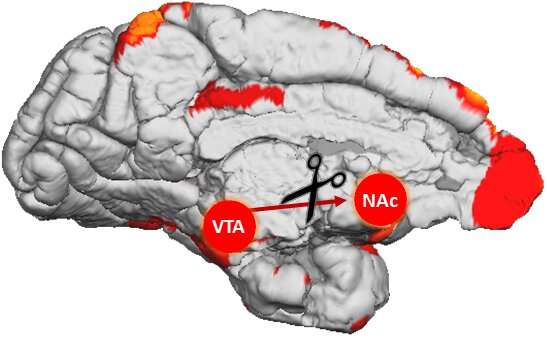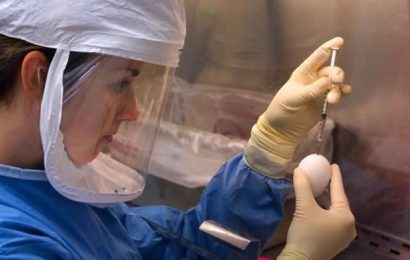
For the first time ever, neurophysiologists at KU Leuven, Harvard and the University of Kyoto have succeeded in reversibly disabling a connection between two areas in the brains of primates while they were performing cognitive tasks, or while their entire brain activity was being monitored. The disconnection had a negative impact on the motivation of the animals, but not on their learning behavior. The study, which was published in Neuron, may eventually lead to more targeted treatments for certain brain disorders.
Learning is crucial to man’s survival. The brain’s reward system plays an important part in this. Babies learn to hold their cup to be able to drink on their own. As a student, you learn skills that are useful for your career. In times of COVID-19, we learn to adapt quickly to measures in order to avoid infections—or at least a fine or disapproving look. In addition to reward, motivation is another important factor when it comes to learning. Without motivation, not even the smartest student would ever obtain a degree. But what is most important: motivation or reward?
Wim Vanduffel and his colleagues investigated whether a specific brain pathway is crucial for motivation or reward-driven learning. In a first task, the animals had to put in a big effort to get a big reward, or a small effort for a smaller reward. The researchers showed two simple shapes on a screen. The primate learned, for example, that he received more orange juice when he looked at a red triangle than when he looked at a blue circle. He also had to look at the triangle for longer and, thus, put in more effort to receive the bigger reward. So, the primate had to be strongly motivated if he wanted the bigger reward.
In a second task, the primate again had to look at two shapes. In this case, however, the choice for one shape was linked to a higher probability of getting orange juice than the choice for the other one. The size of the reward was the same, but looking at one shape was rewarded more often than looking at the other shape.
Just like people, primates learn to select the stimulus that yields the most reward very quickly; they try to maximize their profits. In a later stage, the researchers altered the chances of getting a reward. Without the primate knowing, the shape that previously yielded less reward suddenly became the most profitable. Once again, as with humans, primates learn to change strategies quickly by choosing the new, more profitable stimulus.
The researchers temporarily switched off the nerve pathway between the area tegmentalis ventralis (VTA) and the nucleus accumbens (NAc).
Decrease in motivation
Next, the researchers reversibly disabled a specific pathway. This pathway, the connection between two important cerebral nuclei of the reward system, mostly produces dopamine. The intervention had a strong effect on the motivation of the animals during the first task. Suddenly, the animals always went for the easy small reward instead of the big reward that took more effort. There was no change in behavior during the second reinforcement-based learning task. The animals figured out which stimulus was the most profitable as quickly as the first time.
This specific pathway is, therefore, important to keep motivation up in order to make greater efforts, but not to learn about changes in links between a stimulus and a reward.
The researchers used functional MRI scans to look at the brain activity of the primates. When the pathway was disabled, they noticed a surprising increase in functional connectivity between areas of the temporal and frontal cerebral cortex: the areas are activated more synchronously. This increase was, therefore, linked to a decrease in motivation.
First time
“This is the first time that scientists have succeeded in reversibly disabling a specific pathway between two areas in the brains of primates while they perform cognitive tasks and their whole brain activity is being monitored,” explains Professor Vanduffel. In earlier studies, brain areas were usually activated or deactivated in their entirety, which has an impact on all connections of that specific area. “In the very few pathway-selective experiments published so far, monkeys did not have to perform cognitive tasks, nor was whole brain activity sampled. Contrary to the consensus so far, which is mainly based on rodent research, it appears that this pathway in the brain’s reward system is more important for the motivation to make big efforts than for reward-based learning.”
Psychiatry
Source: Read Full Article


